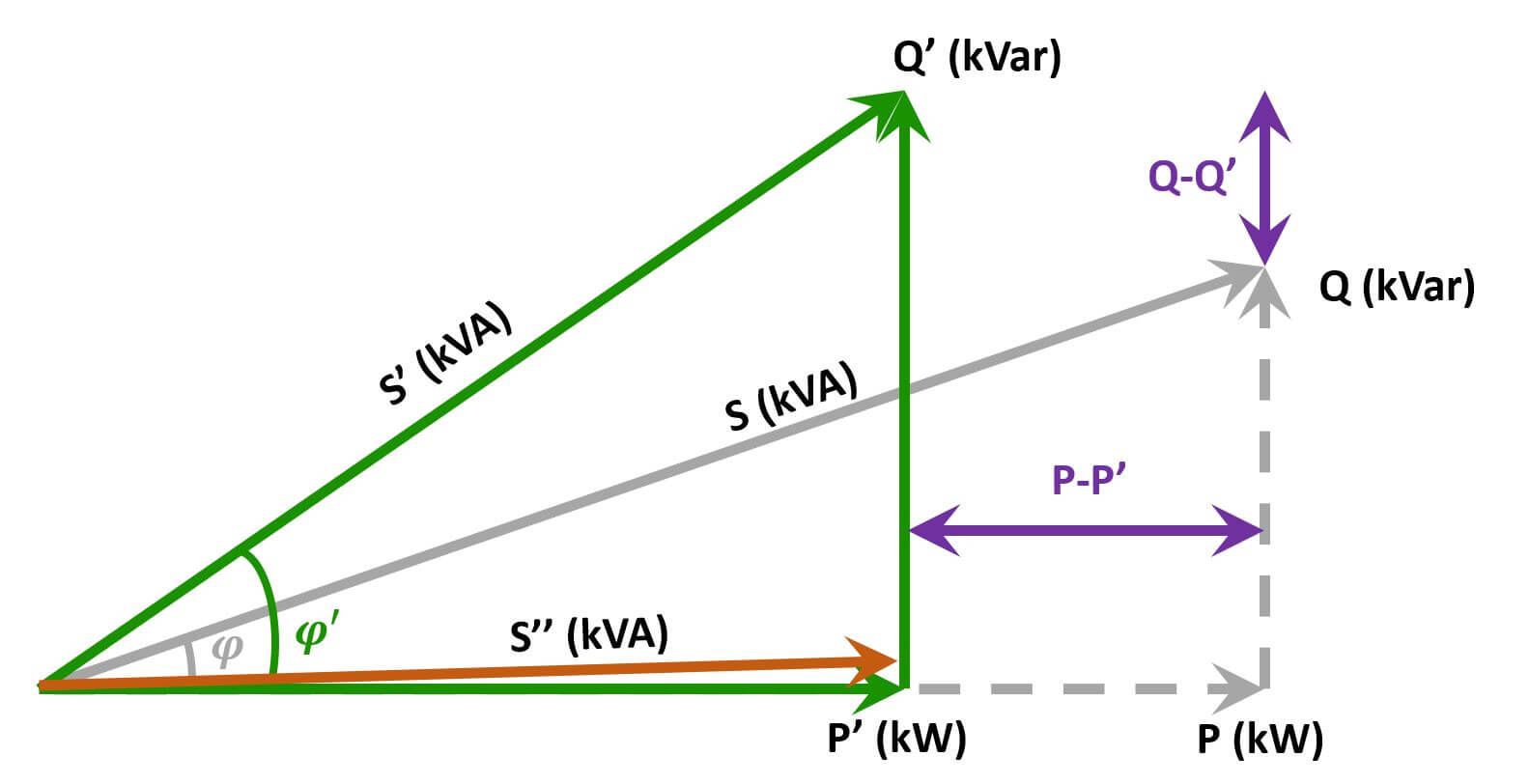As businesses embrace solar energy to reduce their carbon footprint and energy costs, the widespread adoption of photovoltaic (PV) systems has led to an unintended consequence: a decline in power factor. This phenomenon occurs when PV inverters inject large amounts of active power into the grid without adjusting the reactive power component, resulting in a decrease in power factor. In this comprehensive guide, we’ll delve into the reasons behind this issue and explore how Static Var Generators (SVGs) offer an effective solution.
Table of Contents
Understanding the Power Factor Drop
When commercial users install PV systems, the PV inverters convert solar energy into electricity, primarily generating active power. However, these inverters often neglect to compensate for the reactive power component, which remains unchanged. As a result, the ratio of active power to apparent power decreases, leading to a decline in power factor.
Root Causes of Power Factor Drop
- Unbalanced Energy Injection: PV systems inject predominantly active power into the grid, causing an imbalance between active and reactive power components.
- Inductive Nature of Loads: Many industrial and commercial loads, such as motors and transformers, are inherently inductive and require reactive power to operate efficiently. The absence of adequate reactive power compensation exacerbates the power factor drop.
- Grid Code Compliance: Grid codes often impose stringent requirements on power quality parameters, including power factor. Failure to meet these standards can result in penalties or disconnection from the grid.

The Role of SVGs in Mitigating Power Factor Drop
Static Var Generators (SVGs) offer a sophisticated solution to address power factor issues in commercial PV installations. By dynamically controlling reactive power output, SVGs effectively regulate voltage and power factor, ensuring grid stability and compliance with regulatory standards.
Advantages of SVGs:
- Dynamic Reactive Power Compensation: SVGs adjust reactive power output in real-time, counteracting fluctuations in active power injection from PV systems.
- Enhanced Voltage Stability: By maintaining optimal voltage levels, SVGs improve grid reliability and minimize voltage fluctuations caused by reactive power imbalances.
- Grid Code Compliance: SVGs help commercial PV installations meet stringent grid code requirements, avoiding penalties and ensuring uninterrupted grid connection.
Implementing SVG Solutions
- System Integration: SVGs seamlessly integrate with existing PV systems and grid infrastructure, requiring minimal modifications for deployment.
- Advanced Control Algorithms: State-of-the-art control algorithms enable SVGs to respond swiftly to dynamic grid conditions, optimizing reactive power compensation and voltage regulation.
- Remote Monitoring and Diagnostics: Built-in monitoring systems allow operators to remotely monitor SVG performance, diagnose issues, and implement corrective actions promptly.
Conclusion
As commercial PV installations continue to proliferate, addressing power factor drop becomes imperative for ensuring grid stability and compliance with regulatory standards. Enjoypowers Static Var Generators (SVGs) emerge as a versatile solution to mitigate power factor issues, offering dynamic reactive power compensation and voltage regulation capabilities. By integrating SVG technology into PV systems, businesses can enhance grid reliability, minimize operational risks, and accelerate the transition towards a sustainable energy future.
Related Reading
5 Key Steps to Designing an Exceptional SVG Cabinet for Enhanced Power Quality
Unlocking Grid Stability: A Step-by-Step Guide to Installing SVG Modules
How to Achieve High-Voltage Side power factor correction
How to Size Your SVG Modules for Optimal Power Factor Correction
Analysis of Three different power factor correction solutions
Optimizing Energy Efficiency: Power Factor Correction Explained
